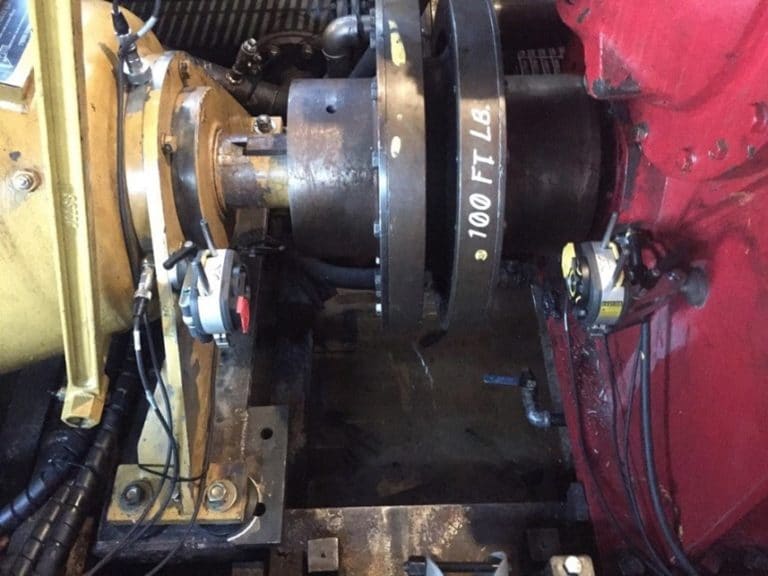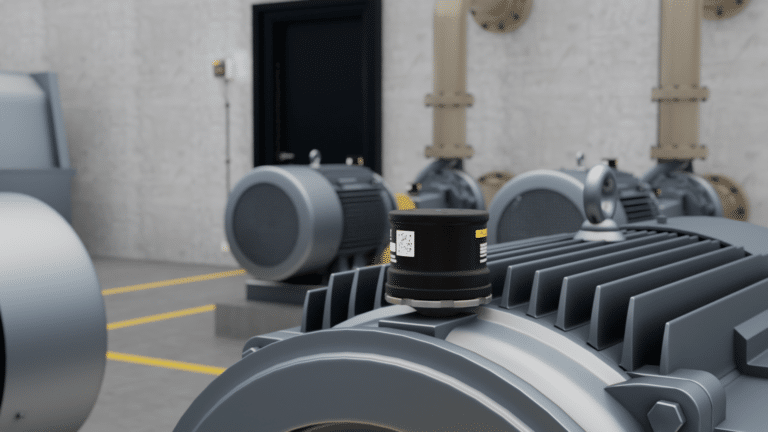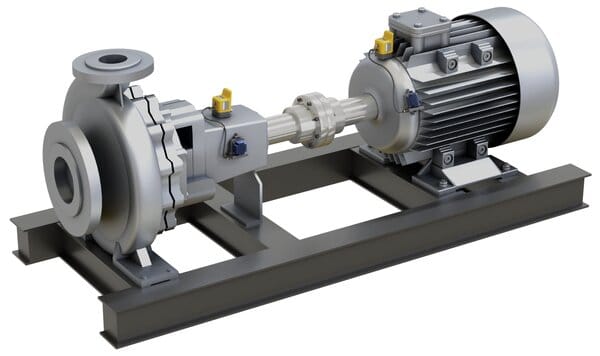Condition monitoring is one of the best maintenance techniques to extend asset lifespans, reduce downtime, and increase operational efficiency. It’s also a key element of any predictive maintenance strategy.
Today’s digital tools make it easy to implement and scale a condition-based maintenance program. This article will discuss what condition-based monitoring is and how a condition monitoring system works in the real world. We’ll also describe the best condition monitoring equipment and give an example of machine condition monitoring in action.
What Is Condition Monitoring?
Condition monitoring is a proactive maintenance strategy that tracks asset health continuously so that maintenance teams can stay ahead of new machine faults. The approach uses sensors to monitor certain machine parameters — like vibration levels and temperature — and identify abnormal patterns.
Even minor shifts in an asset’s vibration levels can indicate a new defect. The sooner it’s identified, the more easily it can be repaired.
Asset condition monitoring isn’t a new approach. But digital tools, like wireless sensors and analytic software, have extended the reach of condition monitoring programs. Today, many organizations are using artificial intelligence (AI) tools to take condition monitoring to the next level.
How Does Condition Monitoring Work?
Condition monitoring uses sensors placed on or inside machines to keep tabs on key indicators of asset health. By monitoring factors such as an asset’s vibration levels or temperature, technicians can identify the earliest signs of an emerging fault.
Every machine has a baseline vibration pattern. Deviations from that pattern can indicate that the asset is developing a loose shaft, for example, or a bearing fault. That’s why vibration data is such a useful tool; it can alert technicians to faults while they’re still invisible to the human eye.
Today, artificial intelligence tools can analyze data collected by condition monitoring sensors autonomously. Many can successfully diagnose machine defects. The best of today’s AI tools can also determine a fault’s urgency and give recommendations for addressing it.
Condition Monitoring Equipment
Condition monitoring equipment falls into three categories: hardware for collecting asset health data, software to analyze that data, and human experts to extract value and decide how to use the data.
Hardware
In the past, technicians used simple tools like sticks or screwdrivers to check on a machine’s vibration levels. Today, most organizations rely on wireless condition monitoring sensors that can track vibration and temperature continuously. The best sensors collect data while machines are in operation and stream the data in real-time to the cloud for analysis.
Software
Most organizations today use a computerized maintenance management system (CMMS) to store and analyze their asset health data. A CMMS, like eMaint, can auto-generate work orders based on asset health data from a condition monitoring sensor. It can also track data, map trends, and create in-depth reports. And a good CMMS will also organize your maintenance records so that auditing and compliance are a breeze.
Today, more teams are also incorporating AI tools into their vibration condition monitoring solutions. Tools like Azima DLI are capable of diagnosing hundreds of distinct machine and asset faults. They can also pinpoint the root causes of defects and issue detailed reports with step-by-step directions for maintenance crews to follow when making repairs.
Human Expertise
No matter how advanced digital technology becomes, it’s still crucial to have human experts involved. Some plants employ condition monitoring experts to help analyze data, while others use remote condition monitoring services to monitor their plant’s health and help drive maintenance strategies.
Types of Condition Monitoring
Some of the most common types of condition monitoring are:
- Vibration monitoring: Tracks an asset’s vibration levels, usually using a wireless sensor that streams data to the cloud. Changes in vibration patterns can indicate faults including unbalance, looseness, and bent shafts.
- Acoustic monitoring: Uses microphones to capture and monitor acoustic emissions from machines, components, and buildings. Changes in sound waves can indicate leaks in gas pipes or in pumps, as well as faulty seals.
- Ultrasonic monitoring: Tracks high-frequency sounds, undetectable to the human ear, emitted by assets and components. Ultrasonic monitoring can pinpoint bearing faults and leaks.
- Oil analysis: Tests lubricants to assess asset health. Changes in oil quality can indicate early wear and tear on assets, or contamination that can damage an engine.
- Temperature monitoring: Uses thermal imagers to assess the health and performance of assets, especially HVAC and HVAC/R systems. Thermal imaging can identify issues like leaks, insulation issues, and faulty seals.
- Power quality monitoring: Measures raw electrical data to identify voltage, current, and load issues and to ensure the safety of maintenance crews.
Every plant has its own unique set of needs. Creating an asset hierarchy is a useful way to determine which machines should be monitored and which types of condition monitoring are most appropriate for your plant.
Example of Condition Monitoring
The Valley Queen Cheese company, located in the town of Milbank, South Dakota, provides a great example of condition monitoring at work.
Valley Queen decided to implement a vibration monitoring program to protect its most critical asset — a large blower that produces the airflow needed to move products around the plant. When the blower goes down, the whole facility is taken offline, raising the possibility that cheese will go bad in the vat.
The company installed wireless sensors on auger bearings, an electric motor, and pillow block bearings that connect to the blower’s centrifugal fan. Using eMaint to analyze the data, the team was able to catch emerging faults with the blower, stay ahead of shutdowns, and keep the production line moving.
Condition Monitoring Techniques
Condition monitoring techniques include:
- vibration analysis
- thermographic analysis
- power quality analysis
- ultrasonic analysis
- oil quality analysis
- acoustic analysis
It can be tricky to determine which condition monitoring techniques are right for your plant. To get started, consult Prüftechnik’s condition monitoring experts. Our team of technicians is always available to answer questions about any facet of condition monitoring, from implementation to troubleshooting and remote condition monitoring. Contact us here.






